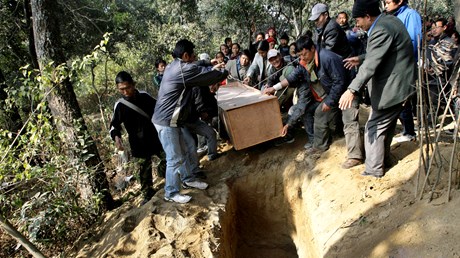Inside evangelicals’ ongoing challenge of securing a public cemetery.

Death in a Christian home in Kathmandu Valley brings more than just sorrow. It commences a family’s search for a way to bid a dignified goodbye to their loved one.
The biggest obstacle for mourners is finding a place to bury the dead in Kathmandu Valley, a region in central Nepal that is home to its three largest cities and hundreds of smaller towns and villages. But despite its size, the area has no public cemetery for its Christian population, which numbers just over 100,000 according to the National Christian Community Survey report released in December 2022. (Kathmandu’s British cemetery includes only the remains of expatriates, and its Jesuit cemetery is no longer in use.)
“We can cremate our dead, but we cannot bury them,” said Suman Dongol, who manages Koinonia Patan church in Kathmandu.
Hindus, who make up around 81 percent of the population, cremate their dead. Nepali Muslims have access to two graveyards attached to their mosques in Kathmandu. (Among those who follow indigenous faiths are the Kirat, who comprise 3 percent of Nepal’s population and are said to be the earliest inhabitants of the Kathmandu Valley. They typically bury their dead but face a similar plight as the Christians.)
No known Christian existed in the country in 1951, when modern-day Nepal was founded and its young government prohibited proselytizing and conversion. A year later, however, Nepali Christians from India established the first Protestant church.
By the early 1970s, there were about 500 baptized Christians in the country. Evangelism carried a possible criminal sentence of three years in prison—successful evangelism, six—but Christians continued to tell people about Jesus. By 1990, when a democratic ...
from Christianity Today Magazine
Umn ministry


.gif)

.gif)
.gif)
